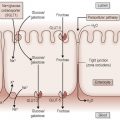4. Transition to adult care
Paula Hallam
Introduction
The simple matter of transferring care from paediatricians to adult physicians has been challenged in the past decade by the notion of ‘transition’, emphasising the need for the change to adult care to be a guided educational and therapeutic process, rather than an administrative event. 1
Older adolescents are in the midst of many life changes related to physical and emotional development, education and career choices, family and peer relationships and the presence of a chronic disease only adds an additional burden. At this stage of development, transfer of care to an adult facility becomes a major challenge for the adolescent, parents and paediatric and adult care providers. 2
The term ‘transfer’ is often used to describe the handover from children’s services to adult services. However, this terminology refers to a single event, whereas the handover should be a planned and managed process which is much better described using the word ‘transition’. 3
Transition can be defined as a ‘purposeful, planned process that addresses the medical, psychosocial, educational and vocational needs of adolescents and young adults with chronic physical and medical conditions as they move from child-centred to adult-orientated health care systems’. 4
The importance of transition of young people with chronic health conditions from paediatric to adult care is finally being recognised but it still needs to be addressed in a coordinated and integrated way. 5 Adolescence is not an easy time for young people. However, if you have a chronic health condition coupled with the usual turmoil of adolescence, it makes it that much harder to cope with. What is clear, both anecdotally and with some modest support in the literature, is that the journey faced by young people with chronic and disabling conditions is a complex one. 5,6 Arranging efficient and caring transfer for adolescents from paediatric to adult care is one of the greatest challenges facing paediatrics—and indeed the healthcare services—in the coming century. 1
Adolescent health issues, including transitional care, have been identified as a major priority area of health in the UK in a recent document of the Children’s National Service Framework:
Current gaps in adult health services need to be addressed to make the transition to adult services easier for young people at risk from, or who have genetic diseases. Paediatric services for rare conditions are frequently more highly developed than adult services, making transition particularly problematic in areas where little adult expertise exists. 7
There are two main reasons why these gaps exist: 7
a) New treatments mean that for the first time, children and young people are surviving into adulthood where there is often an absence of, or limited services.
b) Young people will normally have experienced a more comprehensive approach to their problems through paediatric care, whereas adult services are frequently organ- or system-specific. As many genetic diseases affect several organ systems, the coordination of adult medical care can be problematic.
Communicating with adolescents
It is very important to communicate with adolescents at an appropriate level so as not to be too patronising but also to ensure they understand what is being explained. By far the most important issue in the eyes of young people is communication. 3 Working with adolescents needs different consultation skills from those needed for children or older adults in addition to the clinical knowledge and skills required in each speciality. 3
The following are some practical points for communicating and working with adolescents: 8
• See young people by themselves as well as with their parents. Ensure that you do not exclude the parents but also make it clear that the adolescent is the centre of the consultation.
• Be empathetic, respectful and non-judgemental especially when discussing behaviours such as substance misuse.
• Assure confidentiality at all times.
• Be yourself—don’t try to be too ‘cool’ or ‘hip’!
• Try to explain concepts in a manner appropriate to their development—avoid abstract concepts and examples too far in the future.
Why transition to adult services?
The burden of chronic illness in adolescence is increasing in all developed countries as larger numbers of chronically ill children survive into their second and third decades. 1 The prevalence of cystic fibrosis over 15 years of age in the UK more than doubled between 1977 and 1985 and currently over 85% of children with chronic illnesses survive to adult life. 1
It is important to note that the change from paediatric to adult healthcare is difficult for any young person as well as those with a chronic illness. 1 Young adults often do not register with a general practitioner and frequently drop out of the healthcare system after they leave home and leave behind childhood surveillance such as immunisations, growth monitoring and development. 1 These young people often only make contact with the medical profession in an emergency situation or crisis which could have been avoided if regular contact with the medical profession had been maintained. 1 Good transitional planning and implementation could hopefully prevent such situations from arising.
The particular dangers of the period of moving from paediatric to adult services are illustrated by reports of ‘near misses’ occurring when adult cardiologists treated grown-up congenital heart patients. 9 However, there is some anecdotal evidence that transition programmes in cystic fibrosis, 10,11 diabetes, 12,13 and arthritis2 improve health outcomes and patient quality of life.
To illustrate how different models of transition can affect patient care, an example from a diabetes service is discussed in Box 4.1.
 Box 4.1
Box 4.1 Attendance of young people at four diabetes services averaged 94% before transfer to an adult clinic but fell to 57% two years after transfer. There was large inter-district variation in clinic attendance 2 years post-transfer (29% to 71%) with higher rates seen in districts where young people had the opportunity to meet the adult diabetes consultant prior to transfer. 14
Aims of transition
The goals or aims of an organised, coordinated and uninterrupted transition to adult healthcare for young adults with chronic conditions are: 3,6
• To optimise health;
• To facilitate each young person’s attainment of their potential;
• To involve each young person in the decisions; and
• To reinforce positive attitudes of growing up/adulthood.
Principles of successful transition
Despite the paucity of meaningful data, there are several fundamental principles or elements of transition that have received recognition/endorsement: 6,15,16
• There should be a written policy between paediatric and adult services.
• The timing of transition should depend on the developmental readiness and health status of the individual adolescent.
• Transition should have an early start—when children enter a paediatric service, they should know that they are expected to leave it at some stage.
• Services need to be appropriate for chronological age and developmental attainment of the adolescent.
• Transition should not occur before the young person can manage their illness largely on their own, independent of parents/carers and staff, and can function in an adult clinic. In order to achieve this, preparation for transition needs to begin well before the anticipated transition time. Some suggest an individualised transition plan should be in place by age 14, created with the young person and their family and under regular review.
• Common health problems experienced by adolescents should be addressed, such as growth and development, sexuality, mental health disorders, substance use, and other health promoting and damaging behaviours.
• Transition programmes need to be flexible enough to meet the needs of a wide range of young people but also individualised to meet specific needs of young people and their families.
• The transition should be a coordinated process, including a visit to the adult clinic and one or more joint paediatric–adult clinic visits.
• There should be a designated professional or key worker who, together with the patient and family, takes responsibility for the transition process. This person should be able to act as an advocate for the patient and family and help streamline the transition process.
• Administrative support is key to the process, including provision of a medical summary that is portable and accessible.
• A successful transition to adult services should enhance autonomy, facilitate self-reliance and help the young person to develop a sense of personal responsibility for their health.
When?
I do not believe that one particular age for transition can be set for all adolescents with a chronic illness, as the timing must depend on the developmental readiness of the individual adolescent. The timing should also take into account young adults with learning difficulties who may require additional support to be in place before the transition process can begin. The most important point about the timing of transition is the need for flexibility.
Transition should not occur before the young person is able to function in an adult clinic—that is, they should have the necessary skills and education to enable them to largely manage their illness independently of their parents and healthcare staff. 1




Stay updated, free articles. Join our Telegram channel

Full access? Get Clinical Tree




